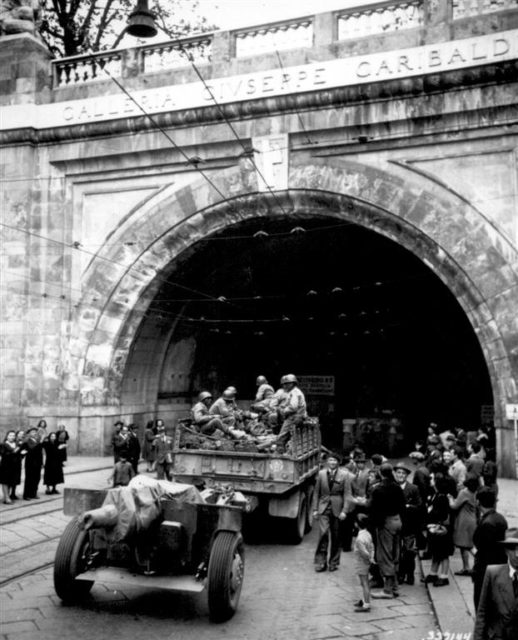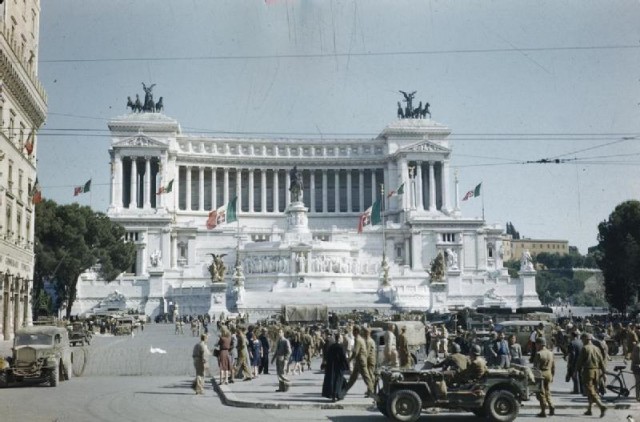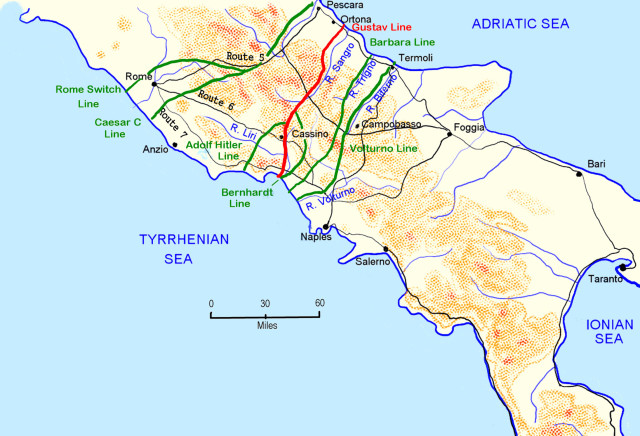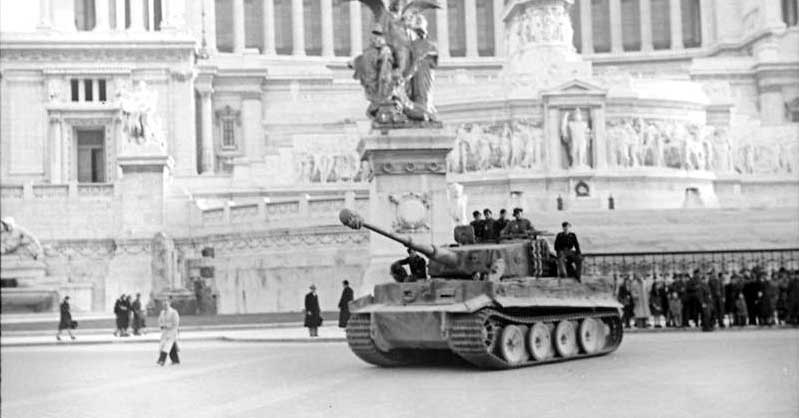Celebrations in the Streets of Rome
On the June 5th 1944, the people of Rome flooded into the streets to welcome the arrival of the Allied troops. The men had marched from the south, following their success at the Battle of Monte Cassino. Now, the crowds were celebrating the liberation of Rome from German occupation.
Shops and workplaces were closed for the day and the reigning Pope – Pius XII – appeared on the balcony of the Vatican to address the jubilant crowds below in St Peter’s Square. He gave thanks for this victory, particularly as the ancient city had suffered remarkably little damage in the course of the battle.
The Pope praised the “goodwill on both sides”, since the city had survived its occupation and liberation largely intact.
Monte Cassino and Beyond
The story begins with the battle of Monte Cassino, not far from the Mediterranean coast. This engagement opened the way for Allied forces to gradually push further north into German-occupied Italy. Earlier that year the Allied troops, bolstered by the arrival of fresh reinforcements of Indian and New Zealand soldiers, had made significant gains. As a result, the German troops were gradually retreating further and further to the north.
The Allies’ triumph in the South opened the way for the next important stage in the battle for Italy – to free Rome from German occupation. The city’s liberation would be the climax a long and protracted series of battles, which would eventually see the whole of Italy freed.
The Strategic and Symbolic Significance of Rome

While under the dictatorship of Benito Mussolini, Italy had sided with and supported Hitler’s aims. However, Mussolini was deposed in July 1943 and the new Italian Government, led by Marshal Pietro Badoglio secretly entered into surrender negotiations with the Allies. Italy formally surrendered to the Allies on October 13th 1943. It subsequently declared war on Germany and became a member of the Allied forces
The city of Rome was of great strategic importance, primarily because of its airfields and extensive road and rail networks. Both Eisenhower and Churchill saw the liberation of Rome as being hugely significant in regaining this stronghold in Europe; it would be the first enemy capital to be captured.
In addition to this, Rome’s status as a great and ancient city of culture and history was symbolically important. The leaders knew that the possible destruction of the city could have had a hugely negative impact on the morale of the Allies.
Rome had been under German occupation for nine months since September 1943. It had previously suffered damage from Allied bombers while still in allegiance with Germany and, to a lesser extent from its former allies after its surrender. While under occupation, Rome had been declared an open city. This signaled to the invading armies that it would not offer resistance, thus ensuring that the minimum force would be used to take control of the city.
Conditions in Rome were not as bad as in some parts of Europe. The city’s water supply was unaffected, and there was working electricity, although there had been some blackouts. These, however, were reported to have been caused not by damage to the system but by the engineers’ reluctance to restore power, fearing that it would help the occupiers.
However, food supplies were now extremely low, as most of the citizens remained in Rome during the occupation. In addition to this, the population had increased due to a large number of refugees who were now living in the city.
“Daring, unconventional and brilliant.”

In March 1944, the American commander of the 5th Army, Lieutenant General Mark Clark, began his advance on Rome. He chose not to take the most obvious approach, which would have been to surround the German soldiers who had already started retreating from the south.
Instead, he chose to strike out from the Anzio beachhead. This tactic was not just unconventional – it actually went against the orders of General Sir Harold Alexander, the British officer in overall charge of the operation. However, the approach proved to be effective and, in the end, the Allied armies met with little resistance from the German occupiers, who were scattered around the city and had already begun their withdrawal.
One of the most valued aspects of Clark’s direct approach was that it not only proved to be successful, but it also resulted in the city being liberated with very little damage.
Although Clark’s campaign would later be described by the eminent American military historian Carlo D’Este as “as stupid as it was insubordinate”, at the time it was considered to be a great triumph. The American Military authorities, in a broadcast from London shortly after the event, described the campaign as “daring, unconventional and brilliant.”
The people of Rome had been told to stay indoors and on the first day of the campaign they followed orders. However, by the second day, it was clear that victory was in sight and the people thronged the street to welcome the advancing Allied Troops, cheering, singing and throwing bunches of flowers at the army vehicles as they arrived.
Realizing that the battle to maintain its grip on the Italian capital was lost, Hitler ordered his troops to withdraw from the city in the early hours of the following morning.

Retreat to the Gothic Line
Despite this victory, the Battle for Italy was not yet over. After their defeat at Monte Cassino and Rome, the German forces retreated to the so-called “Gothic Line.”
This was a string of heavily fortified stations to the north of Florence with bunkers and machine gun nests. It ran from the coast about 30 miles north of Pisa along the mountains between Florence and Bologna as far as the Adriatic, just south of Rimini.
Although the Germans were not decisively defeated, it confirmed that Allied forces were firmly on the road to victory. The fall of Rome was an important landmark battle in the Italian Campaign, which lasted from 1943 until the German forces in Italy finally surrendered in May 1945, at the end of the war.
